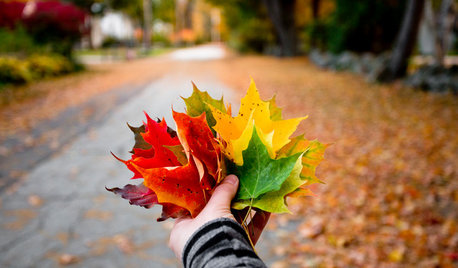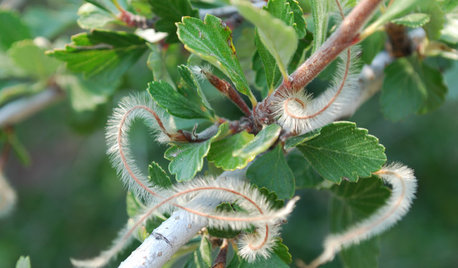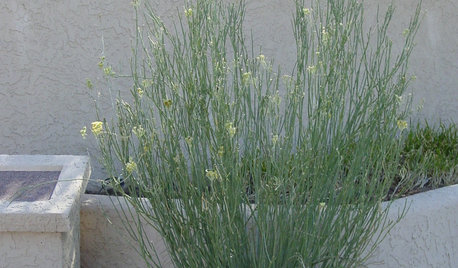Narrow-leaf milkweed
melle_sacto
8 years ago
Featured Answer
Sort by:Oldest
Comments (43)
gyr_falcon
8 years agolast modified: 8 years agochadinlg Zone 9b Los Gatos CA
8 years agoRelated Discussions
Milkweeds Needed
Comments (0)Cynanchum angustifolium (Gulf Coast swallowwart, milkweed vine Marsdenia Species (example species, descriptions follow)(M. cundurango (Cotton root); M. zimapanica(Mex), large climbers, latex sap) Matelea reticulata ([pearl, net-vein, netted]milkvine; milkvine, pearl milkweed, green milkweed vine) Sarcostemma clausum (white twinevine, white milkweed vine, viney milkweed, whitevine, narrow-leaf milkweed vine) Sarcostemma crispum TX (wavy-leaf milkweed vine, wavyleaf twinevine, wavyleaf climbing milkweed, wavyleaf milkvine) Let me know what you have in Milkweeds! Check my list and get back to me thanks Carol...See MoreIs this milkweed?
Comments (1)Doesn't look like A. fasicularis to me......See MoreIs Milkweed OK for Container Gardening?
Comments (4)You can plant the Milkweed in large containers. I'd suggest you put them in the largest containers you have as they don't do very well with transplanting so you will want to do the one transplant and leave 'em. :) I have mine in the ground but also have some in large pots, Buddyben. I'm glad your A. fasicularis is doing well. I've never had much success with narrow-leaf....See MoreI'm deadheading milkweed
Comments (17)Well, I just learned something new again! I didn't know that you could get more blooms if you deadheaded milkweed! My A. tuberosa already has seed pods on it a few weeks already or maybe a month or so (don't really know exactly). Would it still bloom if I cut the pods off at this point? I don't want to do that unless someone knows for sure. I don't want to end up with no seeds and no flowers either. Of course, I could just do some of them to find out. I'm curious if anyone knows though. Cathy...See Moremelle_sacto
8 years agosocks
8 years agolast modified: 8 years agomelle_sacto is hot and dry in CA Zone 9/
8 years agolast modified: 8 years agochadinlg Zone 9b Los Gatos CA
8 years agoBrad Grimm
8 years agolgteacher
8 years agomelle_sacto is hot and dry in CA Zone 9/
8 years agolast modified: 8 years agonapapen
8 years agogyr_falcon
8 years agosocks
8 years agoemmarene9
8 years agonapapen
8 years agoemmarene9
7 years agonapapen
7 years agomelle_sacto is hot and dry in CA Zone 9/
7 years agonapapen
7 years agomelle_sacto is hot and dry in CA Zone 9/
7 years agonapapen
7 years agoemmarene9
7 years agomelle_sacto is hot and dry in CA Zone 9/
7 years agonapapen
7 years agogyr_falcon
7 years agoEast Bay Wilds
6 years agosocks
6 years agonapapen
6 years agogyr_falcon
6 years agonapapen
6 years agogyr_falcon
6 years agonapapen
6 years agosocks
6 years agoEast Bay Wilds
6 years agogyr_falcon
6 years agoBickybee
6 years agolast modified: 6 years agonapapen
6 years agonapapen
6 years agosteiconi
6 years agonapapen
6 years agonapapen
6 years agosf_rhino
6 years agonapapen
6 years ago
Related Stories

GARDENING GUIDESGreat Design Plant: Milkweed
Quit cringing. This not-weed plant is a sight to behold in the garden, has a delicious vanilla scent and is a magnet for butterflies
Full Story
TRAVEL BY DESIGNHouzz TV: Take a Leaf-Peeping Road Trip in New England
Ride along with a Houzz contributing photographer to see gorgeous autumn eye candy from New York to New Hampshire
Full Story
GARDENING GUIDESGreat Design Plant: Curl-Leaf Mountain Mahogany, an Easy Evergreen
Use it as an accent plant or mass it as a screen; this pine and spruce alternative is a hard worker in dry, cold climates
Full Story
DECORATING GUIDESAsk an Expert: How to Decorate a Long, Narrow Room
Distract attention away from an awkward room shape and create a pleasing design using these pro tips
Full Story
LANDSCAPE DESIGN4 Gorgeous Garden Looks for a Narrow Planting Strip
Make a strong design statement in an unexpected place with these ideas for perimeter plantings, pocket gardens and more
Full Story
CALIFORNIA NATIVE PLANTSGreat Design Plant: Asclepias Is Attractive to Monarch Butterflies
Increase monarch butterfly populations in California by planting stunning native milkweeds
Full Story
PATIOSPatio Details: A Custom Aluminum Arbor Cools Things Down in Texas
Panels in the roof have leaf pattern cutouts that create dappled shade and a calm, relaxed ambience
Full Story
GARDENING GUIDESGreat Design Plant: Asclepias Subulata
With its attractive upright shape and yellow flowers, Southwest native rush milkweed adds beauty while attracting butterflies
Full Story
GARDENING GUIDES6 Steps to Creating Your Butterfly Garden
Encourage these fanciful winged beauties to visit your garden while helping restore their fragmented habitat
Full Story
GARDENING GUIDESAttract Hummingbirds and Bees With These Beautiful Summer Flowers
Roll out a welcome mat for pollinators to keep your landscape in balance and thriving
Full Story





socks